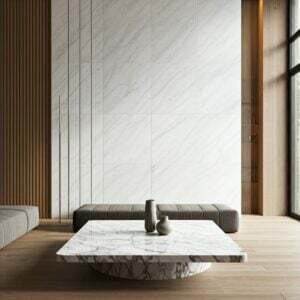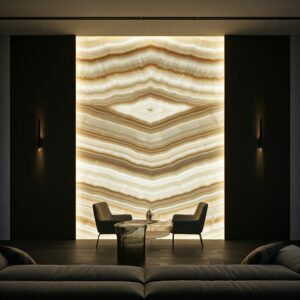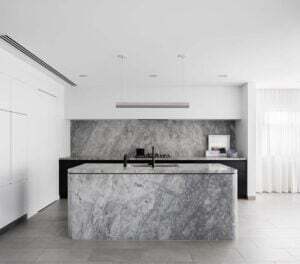The terms “rock” and “stone” are often used interchangeably in general conversation and it’s understandable why. In fact, the online Merriam-Webster even includes the description of rock under the definition of the term stone, so it’s no wonder that the terms get confused.
But what is the difference between rock and stone, and does it matter? Let’s dive in and find out.
Stone vs rock
What is a rock?
Rocks are most commonly found in the crust of the earth but can also be found, in the form of cliffs and other manifestations, on the surface as well. Rock is made up of stone and another material called mineral matter.
There are actually three different types of rock found on the planet: Igneous, Metamorphic and Sedimentary.
Igneous Rock
This type of rock is formed when lava or magma cools down and then solidifies. Often this happens deep beneath the surface and over time the rock then rises to the surface.
Metamorphic Rock
These rocks form when a previous type of rock is subjected to extreme levels of pressure and/or heat.
Sedimentary Rock
This type of rock is formed from the compartment of either other forms of rocks and/or fossils and other minerals on the surface of the Earth or in water depositories.
What is a stone?
Stone is referred to as a material made of non-metallic rock-mineral matter. In other words, it is cut from rock. When we refer to natural stone, we’re talking about stone that is quarried (or cut) from the ground. This is in contrast to engineered stone or quartzite which is a man-made construction material.
So, in a fascinating way, rock is made up of stone and stone is cut from rock! Confused? That’s okay!
Types of Natural Stone
There are numerous types of natural stone which all boast unique features and a range of shades, patterns, colours and styles.
Here’s a brief breakdown and summary of the different types of natural stone:
Granite
Granite is a type of igneous rock and is known for its iconic grainy crystallisation.
Marble
Marble, the classic stone of interior construction, is metamorphic and is made up of recrystallised carbonate minerals.
Quartzite
Quartzite is also a metamorphic rock but it comes from the formation of quartz-rich sandstone that has been exposed to super high pressure or heat.
Onyx
Onyx, a stunning form of sedimentary rock, features layers of chalcedony. What on Earth is that? It’s just a fancy word for cryptocrystalline quartz which itself is a fancy word for a type of silica.
Limestone
Limestone is another type of sedimentary rock made of calcium carbonate. Often containing microscopic organism fossils, it also contains calcium and carbonate formed in water depositories.
Travertine
Like limestone, travertine is a sedimentary rock that also forms in water, especially hot springs and the like, and is known for its various rustic and earthy colourings.
Using Stone In Construction
Stone is used in a wide variety of applications in construction and homes. Externally and internally, natural stone has been used for millennia and continues to be a popular choice of material for its magnificent aesthetic, durability and hardiness.
Uses For Stone
Just some of the various home uses of natural stone include:
Benefits of Rock and Stone
Why are rocks and stones so commonly used for construction? There are actually a number of reasons.
Aesthetic
From the opulent aesthetic of marble to the rustic, down-to-earth tones of travertine, nothing beats the visual impact a stone kitchen countertop of wall has. There’s plenty of variety when it comes to colours, shades, styles and look of all types of natural stone, so there’s no lack of opportunity to find the perfect stone to suit your home style.
Durability
Stone is a highly durable material. Formed in or beneath the surface of the earth, it’s extremely hardy against exposure to the elements or the hive of activity within your home. If you’re going to build or renovate a house, you might as well make your investment last and stone will help you do that!
Versatility
Vanities, benchtops, floors, staircases… What can’t you use stone for? Stone can even be incorporated in both large slabs cut to shape and size or smaller tiles that can be arrayed in any style or pattern that suits you.
Uniqueness
Due to the fact that natural stone is quarried from the ground and not produced in a factory or by man, every single slab is unique. There is no exact copy of any rock or stone found anywhere else in the world. If you value exclusivity and uniqueness in your home, nothing beats natural stone.
Value
Another fantastic reason to incorporate stone into your home is its ability to add more and more value to your home. Whether you simply want to increase its appeal to prospective buyers or actually increase the overall value of the home, natural stone is fantastic.
Between a Rock and a Hard Place
While you might once have found yourself stuck between a rock and a hard place trying to explain to someone the difference between a rock and a stone, you now know it’s actually quite simple. Rock is made up of mineral matter and stone, whereas stone is cut from rock itself to form the slabs that you then use to beautify and enhance your home!
Want to chat more about stones, rocks and everything in between? Contact the Euro Marble team today!





